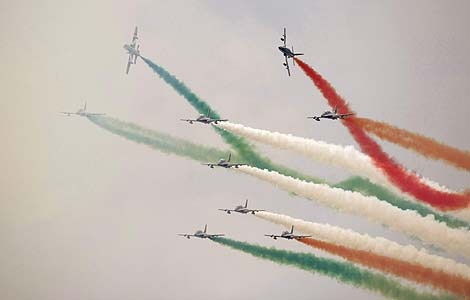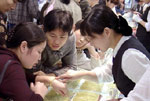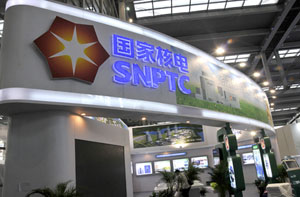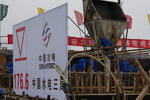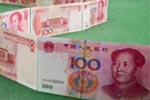Aviation could lift China, US economies
Updated: 2011-09-27 14:45
By Tan Yingzi (China Daily)
|
|||||||||||
WASHINGTON - A China-United States partnership in the aviation industry could be the best way to get more badly needed manufacturing jobs back to the US and provide China with the best aviation services.
That's the hope of hundreds of Chinese and US aviation industry insiders, who are in Washington for the three-day US-China Aviation Summit.
"Ultimately, our success helping China meet its aerospace goals will mean more jobs here at home," Acting Secretary of the US Department of Commerce Rebecca Blank said during her keynote speech at Walter E. Washington Convention Center in Washington on Monday.
The Barack Obama administration regards exports a key driver of America's economic recovery and job creation.
In 2010, the aerospace industry accounted for nearly $78 billion of the total $1.84 trillion US exports, and its workers earned 47 percent more than other manufacturing workers, Blank said.
"Clearly, we would like to see the aerospace workforce grow," she said. "And it will if the United States and China work more closely together."
Both countries have seen huge potential.
"We can see it clearly that China lags far behind the US (in aviation industry)," said Xia Xinghua, deputy chief of Civic Aviation Administration of China (CAAC).
For instance, he said, though China has a population of 1.3 billion, more than four times of the US, in 2010, its air passenger traffic accounted for only one-third of that of America, its number of commercial aircraft only one-fifth of that of America and the number of public airports less than one-third of that of America.
The total number of general aviation hours in China is 368,000, while the figure in the US is 23.3 million. Chinese have a mere 1,010 general aviation aircraft, while Americans own 230,000.
But the growth in the Chinese aviation industry is breathtaking.
"As recently as seven years ago, China was the 10th largest US aerospace export market, behind Brazil, (South) Korea and the Netherlands. Yes, the Netherlands," said the US official.
"Last year, fueled by China's enormous demand for civil aircraft, pilot training, airport and air traffic management equipment - products and services in which the US is very competitive - China was second only to France."
According to the China Civil Aviation 12th Five-Year Plan (2011-2015) unveiled in April, by 2015, the annual average growth rate of the civil aviation miles will be 13 percent, passenger traffic 11 percent, cargo and mail volume 10 percent.
"China-US air transportation is our largest international market so far," Xia, the CAAC official, said.
China is also the biggest buyer of US-made Boeing aircraft, with a total of 820 serving Chinese airlines, or 49 percent of the total transportation planes.
Since 2000, with the far-reaching foresight in the worlds' aviation industry, the two countries have started to look for ways to explore cooperation possibilities.
In 2004, the US Trade and Development Agency (USDA) launched the US-China Aviation Cooperation Program to promote commercial, policy and technical cooperation between the US and Chinese aviation sectors.
This program works with 50 US private sector members and four public partners, including the Federal Aviation Administration and CAAC.
The project has helped to advance cooperation in aviation safety, standards, air traffic management, airspace liberalization, general aviation, aviation market development and environmental best practices through a series of workshops and training programs.
According to the USDA, these programs have generated over $3.8 billion in exports of US manufactured goods and services.
But the US aviation industry has been urging the Chinese government to open more passenger traffic markets to them and increase more flights between the two countries.
"The Chinese aviation cargo market is fully open to the United States and our passenger traffic market will be open to foreign companies step by step, according to our own abilities and plans," Xia said.
Related Stories
Embraer releases Chinese Regional Aviation Market Outlook 2011-09-23 17:22
AVIC shines at Aviation Expo 2011-09-23 16:59
Price of imported aviation kerosene rises 2011-09-21 16:13
Bright skies for aviation industry 2011-09-19 09:43
- Renren buys video-sharing 56.com for $80m
- Gold ATM activated, but not for long
- Forum urges transformed economic basis
- Software industry grows 30% in Jan-Aug
- Alibaba's HiChina unit to seek US listing
- China steps up regulation of rare earth industry
- Central region opening up
- Rising prices cut into incomes


